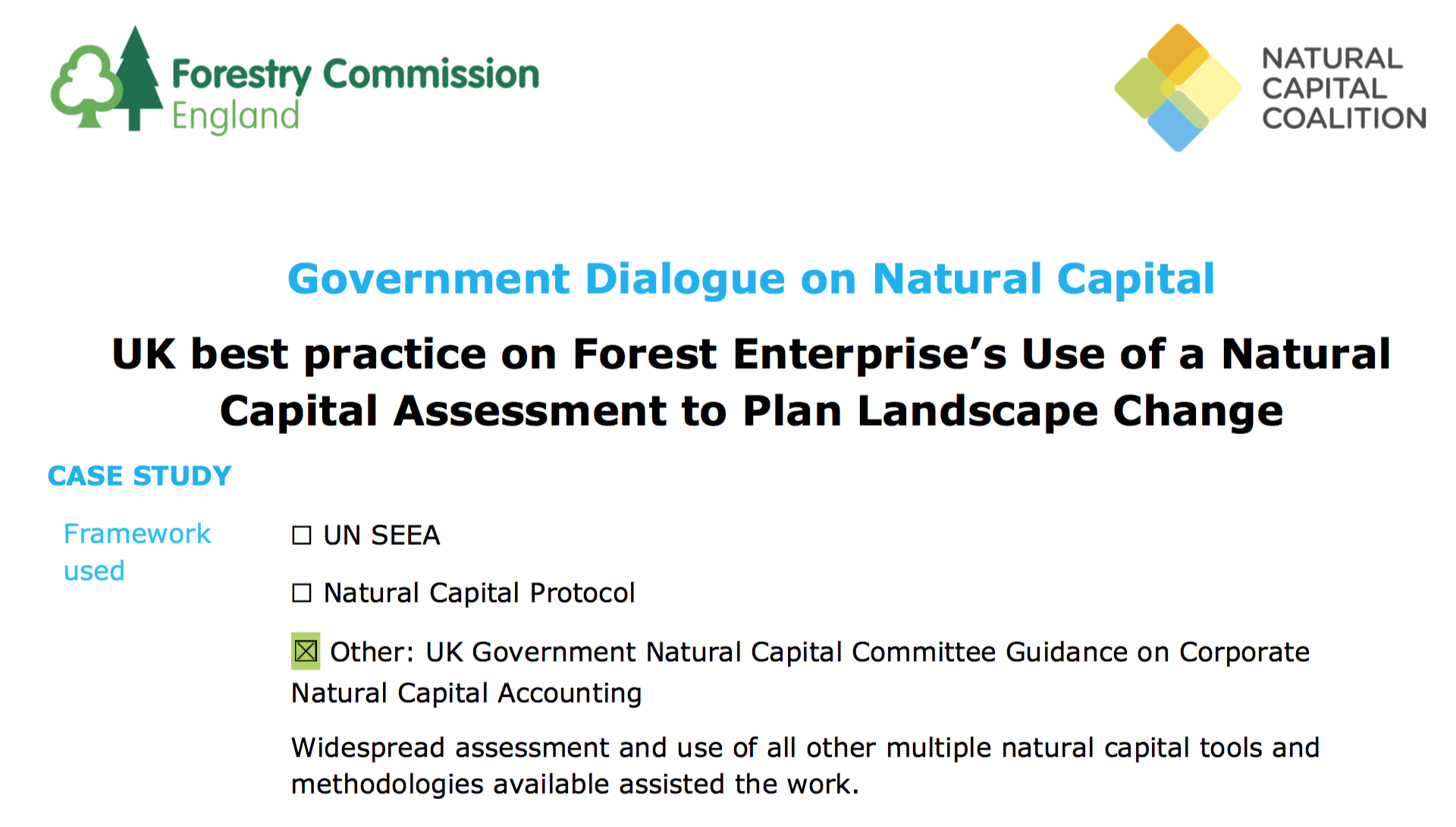The organization/ department in brief
Forest Enterprise is an England wide organisation that operates a cross over between a commercial timber business and the provision of public benefit through environmental management and recreation provision.
Why was this undertaken?
Forest Enterprise always tries to make management decisions that deliver the best result for the public, and that balance the environmental and social benefits with the need for profit to deliver those activities.
Forest Enterprise has set up a new system of accounting to understand whether, across all the land we manage (254,000ha), we are improving the value of our natural capital, but of course that looks at the outcomes of our work.
This project was about testing whether applying this kind of natural capital calculation at a small scale on individual land use decisions would help make decisions that would add more to the natural capital value of our land.
What was the scope?
Our scope for the project was to apply a natural capital assessment of options to practical land management decision making. We undertook a pilot test project on:
- Two distinct areas of land: one small at 20ha, and the other larger at 145ha;
- Two very different geographic locations: one in the South East, and one in the North East, 350miles apart.
- Two very different environmental contexts: one in a sub-urban location close to London on reclaimed landfill substrate, and one in the uplands of Northumberland, close to the border with Scotland at an elevation of 184m (604ft), on current sheep pasture.
What was the role of the Government?
Forest Enterprise is an arm’s length organization of the UK government, so our policy objectives of benefitting society through management of our natural capital are set by legislation.
The UK government, through its department for the environment Defra, has initiated the use of natural capital across the land management sector by commissioning research into the concept, and establishing a Natural Capital Committee to provide independent leadership.
Defra has provided government leadership by giving natural capital a major focus in its recent (2018) 25 year plan for the environment.
The Natural Capital Committee also commissioned detailed guidance on undertaking natural capital assessments which Forest Enterprise has used to guide all its work on natural capital accounting.
What were the results?
The result was a completed natural capital assessment of alternative options for changing the landscape through planting new forests in the two test locations.
The work involved engaging the local multi-disciplinary land management team to help to develop an assessment tool for each area of land. The team work included foresters, recreation staff, ecologists, land agents, commercial timber marketing specialists, senior local management and senior national management.
The two teams:
- identified what ecosystem services their area of land delivered for society;
- looked at all the different assessment or valuation options that were available for those ecosystem services;
- generated different options for alternative land use (one option was ‘no change’, i.e. the existing land use option)
- used tools to calculate quantitative values where possible;
- used their specialist knowledge to include qualitative information about the areas that were important;
- tested the new tool that was developed, and made amendments and modifications to improve the tool for future use.
The results of using the tool identified that in some options there was a significant difference in the natural capital value of the different choices. The tool demonstrated this in tables and in graph format.
The achievement is that the options generated in each location were improved because of the use of natural capital assessment tools, and the planned landscape change will add more to Forest Enterprise’s overall natural capital, and the benefit to society, because of this project.
The learning is that this is an approach that team members are positive gives them additional information to make better practical land management decisions.
Next steps
Forest Enterprise plan to test the tool on different kinds of land management decisions.
Contact in Forest Enterprise England for more information: Miranda Winram: Head of Strategy and Insight 0044 7901 102831 miranda.winram@forestry.gsi.gov.uk
‘It’s really good news for all the people and nature that benefit from our woodlands that our practical decision making can be improved by using natural capital assessments.’
Simon Hodgson, Forest Enterprise Chief Executive
‘The UK Government is committed to improving our natural world, and we’re delighted that Forest Enterprise’s project shows the benefit natural capital calculations can have on practical land management decisions.’
Defra, UK Government.













